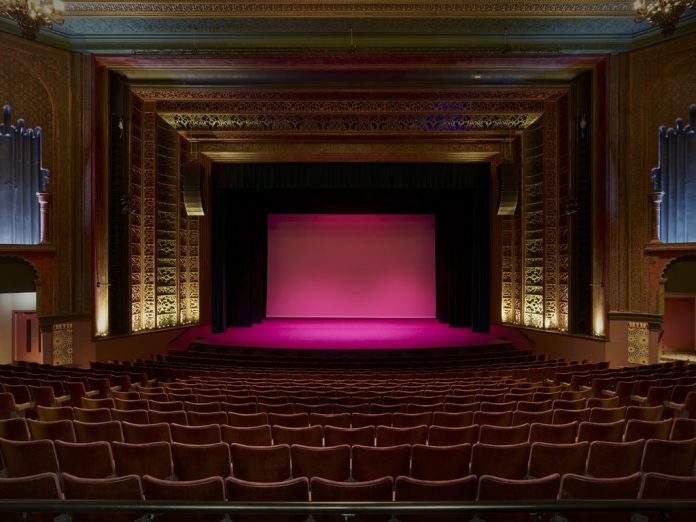Soho doesn’t really hide what it is. At night you walk in and it already feels like curtain’s gone up, the streets acting like a stage even before you get near a venue. The light spills out of doorways, people lean against brick walls smoking, cabs cut through slowly like part of the set. It’s messy but that’s the point. Theatre here isn’t only tickets and seats, it’s atmosphere, and Soho carries it without trying.
The Pavement Feels Like Rehearsal
Start with just walking around. Old Compton Street, Dean Street, Greek Street, they all have that charge. You hear one soundtrack from a bar, a completely different one across the road. People talking too loud, laughing too hard, couples arguing then making up a few steps later. It feels less like an audience and more like a cast, everyone passing by playing some part without knowing it. Stand still five minutes and it’s like you’ve already caught the opening scene.
Basements Where the Drama Lives
Step inside almost anywhere and you find spaces built like improvised theatres. Low ceilings, old wood, a stage that looks thrown together fast but still grabs the light. The kind of spot where someone belts a torch song right in front of you, or a comic pulls the first row straight into their bit. Because the rooms are small the effect is bigger, every laugh or silence amplified. It’s not polished West End staging, it’s tighter, rawer, and sometimes the mistakes make it better.
Show Spaces Never Left
People talk like side shows are a thing of the past but Soho shows it isn’t. You can wander into a room where a piano’s tucked against the wall, a singer balancing wit and heartbreak in one song. Feathers, sequins, jokes that land a little too sharp. It’s theatre in miniature, running on charm and nerve. You don’t just sit and watch politely, you get dragged in with eye contact, a wink, maybe even a line aimed straight at you. That exchange is the whole point, the performer and the room feeding off each other.
The Box Soho and Its Edge
If there’s one venue that takes the word theatrical and pushes it until it bends, it’s The Box Soho. This isn’t your average show. The shows are loud, exhilarating, and sometimes hard to describe at all. You walk in and the space itself feels staged, velvet and shadow, tables set like props. Then the acts land—wild, strange, impossible to forget. You don’t just sit polite and clap, you react, sometimes shocked, sometimes amazed. That blur between stage and spectator is what gives it power. The stories always grow when retold, half because of memory, half because nobody can quite believe they saw it.
Music as Theatre
Soho’s long been tied to music and in many of these rooms it plays out like its own script. A jazz quartet in a basement corner can carry as much drama as any play. Solos build like monologues, drums cut in like sudden scene changes. You sit in the dark with a drink and the room holds still between notes, that silence as loaded as anything spoken on stage. The performers play, the crowd answers with claps or just held breath, and it feels like a shared script no one wrote down.
Hidden Upstairs Rooms
Not all the theatre is underground. Some of the strongest spaces are upstairs, behind doors that don’t look like much. You climb a narrow staircase, push open a door, and find a whole scene waiting. Actors reading lines, drag performers turning the room into their runway, a solo guitarist filling silence that stretches across every table. It’s always slightly unexpected, which makes it feel like you stumbled into rehearsal and were allowed to stay. That element of chance keeps Soho alive.
Even the Pubs Carry the Act
People forget that old Soho pubs hold their own drama. Not staged performances, but still theatrical in their way. The regular who tells the same story every Sunday, the landlord who knows everyone’s name, arguments over football that sound like scripted banter. Sit in the corner and it plays out like a small play in real time, no ticket required. The difference is you’re part of it whether you want to be or not.
Soho as Living Stage
When you piece it together—streets, basements, upstairs rooms, music, and show spaces—you see Soho works like one giant theatre district but without the rules. There’s no clear divide between stage and seat, performer and guest. The whole neighbourhood runs on performance, some of it planned, some of it improvised, all of it part of the same ongoing act. Walking home at the end of the night you realise you’ve been part of a show just by being there.
Theatrical Nights That Don’t End on Curtain Call
The official theatres shut their doors, curtains close, but Soho doesn’t end there. It keeps spilling out, bleeding into alleys and after-hours rooms. The drama doesn’t stay on stage—it follows into conversations, into unexpected songs, into strangers sharing cigarettes under the same streetlight. That’s why Soho remains theatrical in a way no other London district can match. It’s performance without pause, a show where the city itself plays the lead role.
And the best part is you don’t need a ticket. Some spots, usually the most unhinged, are as exclusive as it gets, so you need a table well in advance. Then you’ve got the more tame stuff where you can be walking home, half-lost, and stumble into a crowd still buzzing from the night. You might catch a voice drifting from a window, or two people arguing then laughing like nothing happened. Hard to tell if you’re just watching or if you’ve been pulled into it. That’s the pull of the place.
Soho doesn’t clean itself up the way other parts of the city try. It’s rough, noisy, sometimes it grates, but it’s alive.

